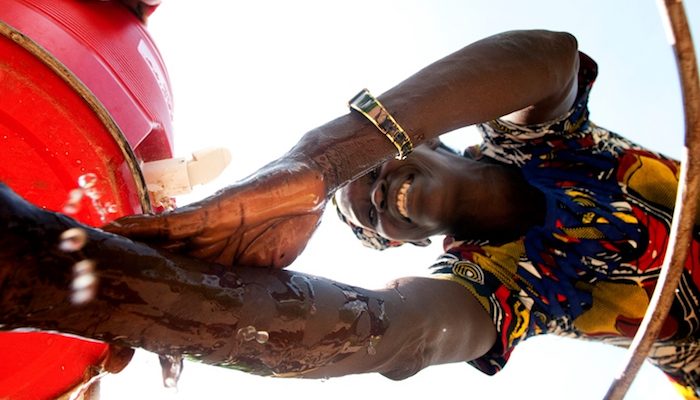
It was devastating and catastrophic. More than 30,000 Rwandan refugees died in less than a month in camps in Zaire (now Democratic Republic of Congo), after they fled from genocide in their own country. “There were piles of bodies alongside the road in Goma. People suddenly collapsed in front of your Landrover, and you had to swerve very fast to avoid them” recalls Mukesh Kapila who dealt with the UK government’s humanitarian response during the Rwanda crisis.
The deaths were due to cholera 22 years ago, reminding us of the untold suffering of persons in conflict situations. There was a stark need to understand and manage such health emergencies with the urgency that was warranted. There were lessons to be learnt by humanitarian organisations and governments. But they were not, or they have been quickly forgotten. After the devastating earthquake that struck Haiti in 2010, cholera arrived to sicken 770,000 people – about 7% of the population – and kill over 9,000 in the subsequent six years. This year alone, some 37 Haitians have been dying from cholera each month.
There are also many deaths in refugee camps in Eastern Africa due to diseases such as cholera. For example, in the middle of last year, at least 33 Burundian refugees succumbed to a cholera outbreak in Tanzania, while more than 3,000 others were infected. Four months later, a cholera outbreak in Kenya’s Dadaab refugee camp, affected more than 500 people, and claimed seven lives. Dadaab is the largest refugee camp in the world housing 350,000 people. Arguably, the toll could have been much higher. The United Nations High Commissioner for Refugees (UNHCR) attributed the outbreak to unhygienic conditions in parts of the camp. El Nino rains were reported to have exacerbated the situation.
Cholera can be a health emergency in any large concentrated populations in the context of man-made or natural disasters. For example, camps for refugees and internally displaced persons such as Kakuma (180,000 people) in Kenya and Nyarugusu (140,000 people) in Tanzania put a huge strain on available facilities. Due to the political turmoil in their home countries, the number of refugees streaming into these camps keeps growing, worsening an already bad situation.
We must not get accustomed to tolerating the humanitarian catastrophes caused by diseases such as cholera. Conditions found in refugee settings that make them cholera-prone include inadequate water supply, poor sanitation, dense populations and the lack of awareness and education.
Concerted water, sanitation and hygiene strategies are pivotal in ensuring that there are no cholera outbreaks. Supply of potable water could be provided through building wells and drilling boreholes, where feasible. In the Kyangwali refugee settlement in Uganda, Action Africa Help International (AAH-I) maintains a significant number of wells and collection points, spread across several villages. The impact was that no cholera cases were reported in 2015. We also learnt that collaboration is crucial in tackling health-related issues in camps. Governments, aid agencies, and the refugees themselves must be proactive in playing their complementary roles.
AAH-I is promoting hygiene and sanitation at both household and community levels. This involves well-structured and simple messages for the community that also targets learners in schools. In essence, refugees actively participate in stemming cholera. Having some agreed core standards is important. We work to the Sphere Standards for WASH in humanitarian interventions such as providing 15 litres of water per person, and a maximum distance to water points of no more than 500 metres. Additionally, there must be equitable access to sanitation and hygiene facilities.
Surveys conducted in crisis situations consistently reveal health as being among the top three priorities for affected communities. The correlation between conflicts and cholera outbreaks witnessed in camps in Kenya, Tanzania and DRC calls for disease preparedness in emergencies. Measures to address prevention of the disease and its quick control once it occurs require resources such as trained healthcare workers, drugs, campaigns, availability of potable water and toilets. These resources need funds as well as all stakeholders working together to stop unnecessary deaths from occurring.
Cholera is an ancient disease that was so dreaded by humanity through the ages. But today, it is entirely predictable, preventable, and treat-able. Therefore, when cholera outbreaks keep on occurring, despite all the knowledge, technologies, and capacities at our disposal, they reflect a failure of will and accountability on our part.
Last month, I spoke at the special session on global health at the World Humanitarian Summit in Istanbul. This called for everyone to come together in a new global undertaking on protecting and promoting the health of crisis-affected people. Stopping future cholera outbreaks will be a very practical test of whether we meant what we said in Istanbul.
Further Reading on E-International Relations
- Ebola Response in the Democratic Republic of Congo: A Bridge to Peace?
- Global Displacement, COVID-19 and the Risk of a False-positive Flattened Curve
- A Tale of Silent Security in Little Mogadishu
- Writing About Displaced People in the Time of Coronavirus
- Opinion – The Unintended Consequences of Foreign Aid Bypass
- One Party State: Is It Good or Bad for Governance?